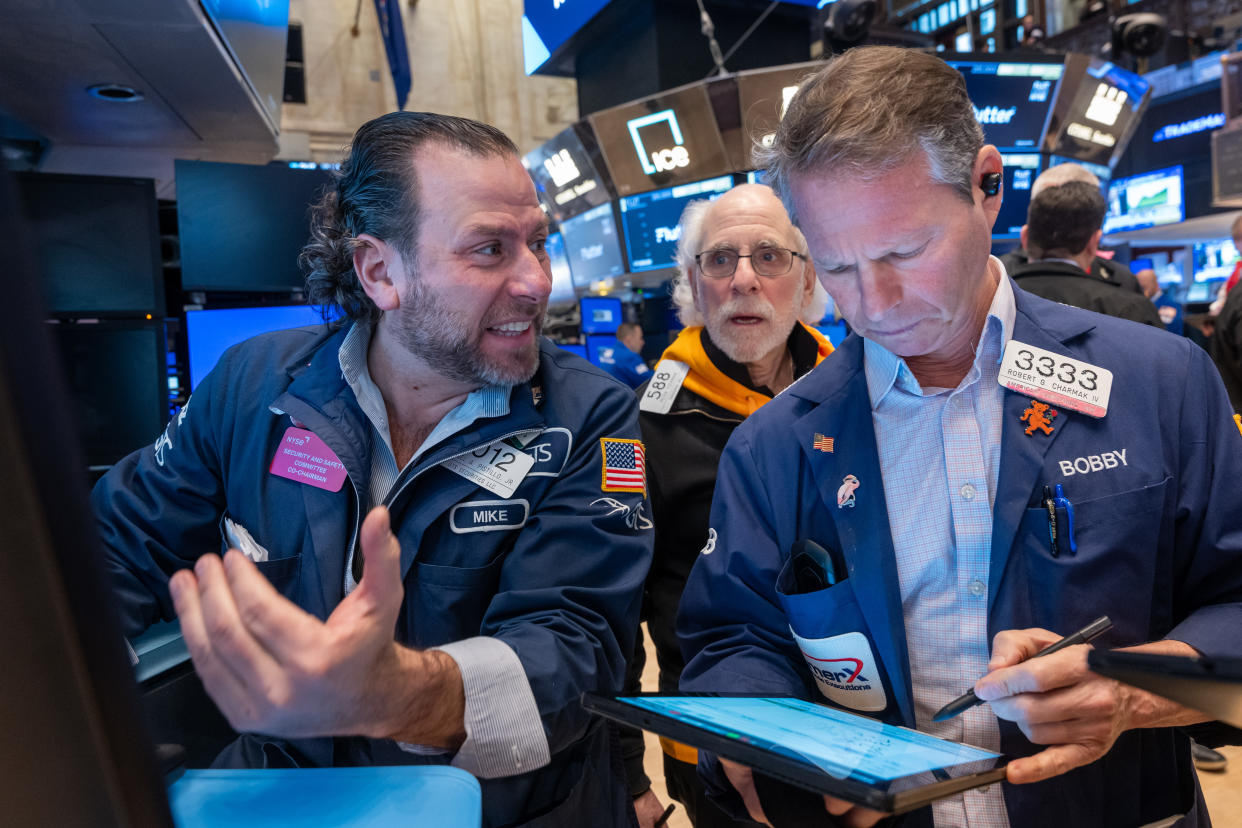High rates haven't always been a problem for stocks
Rising bond yields have been a key catalyst for stock drawdowns over the past year. But higher rates haven't always been bad for stocks.
In an analysis going back to 1990, BMO Capital Markets chief investment strategist Brian Belski found the S&P 500 (^GSPC) delivered an average annual return of 7.7% in months when the 10-year Treasury yield was less than 4%, compared to an average annual return of 14.5% in months when the 10-year was 6% or higher.
Stocks also performed better when rates were rising rather than falling. The average annual rolling one-year return for the S&P 500 during a falling rate environment was 6.5%, compared to 13.9% in a rising rate regime.
"This makes sense to us since lower rates can be reflective of sluggish economic growth and vice versa," Belski wrote in a research note published Monday.
Since the start of April, bond yields have soared, with the 10-year Treasury yield (^TNX) up roughly 40 basis points to roughly 4.58% and hovering near its highest level since November 2023. This comes as the S&P 500 has fallen more than 4% in the same time period.
"In a higher interest rate environment, certainly higher than 0%-1% or 0%-2%, stocks traditionally do very well," Belski later told Yahoo Finance in an interview. "We still think, from these levels, stocks are higher at year-end."
Belski acknowledged in his note that a large part of the recent weakness seen across the major indexes has come after a string of hotter-than-expected inflation reports scaled back investor expectations for Federal Reserve cuts this year. Markets are now expecting two interest rate cuts this year, per Bloomberg data, down from a peak of seven cuts expected in January.
This has contributed to the rise in yields over the last month, but again Belski argued that the reasons behind that uptick aren't necessarily bad from a stock perspective.
"Rising interest rates can mean that the bond market is correctly anticipating future economic growth and staying ahead of inflation — things that typically benefit stock prices," Belski wrote in his research note.
Belski believes the likely path forward for rates is a "return to normalization," where the 10-year Treasury yield sits closer to its 75-year average of 5%.
"So if we can hover between this 4% and 5% range [on the 10-Year Treasury yield] and still have strong employment, but most importantly, have very strong earnings and, oh by the way, cash flow, I think the market can do very well," Belski said.

Josh Schafer is a reporter for Yahoo Finance. Follow him on X @_joshschafer.
Click here for in-depth analysis of the latest stock market news and events moving stock prices.
Read the latest financial and business news from Yahoo Finance
